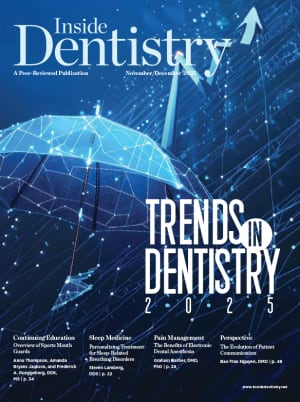Group dental practice owners seeking to increase profit margins often look to higher production, but the reality is far more nuanced. With challenges such as staffing shortages, rising overhead, and streamlining insurance persisting into the second half of 2025, improving margins for sustainable profitability isn’t a nice-to-have, it’s a must-have.
Some group practice owners may automatically assume that achieving profitability will be driven through increasing patient loads. In fact, growing practices often find that growth and profitability are divorced from one another. Practices that are successfully hitting their production goals can also find their operational expenses are experiencing unchecked growth, undercutting their margin.
To get out of this insidious cycle, owners should swap chair time for desk time to benefit their practices. The most resilient and successful practices across the U.S. are finding that profit margin gains often lie in the operational blind spots they’ve been overlooking. Based on my experience working with group dental practices, here are the critical steps you can take to make your practice more sustainably profitable.
Know Where Your Money Goes
The daily work of addressing patient demands, staffing concerns, and supply chain issues can backburner the work of regularly tracking expenses, especially if there seem to be no obvious issues. Understanding where your money has been going is essential to realizing what areas may need to be examined further. As a starting point, this should include routine reviews of financial statements, clear visibility into per-provider performance, and an understanding of essential and discretionary expenses. Financially mature practices often track operating margin, overhead ratio, and contribution by location or service line as baseline metrics.
Cut Where It Counts
It can feel productive to use key insights from a financial review process to cut budgets across the board, but that unilateral approach can be more damaging in the long term. While each practice is unique, group dental practices should generally be protecting and funding revenue-protective activities like treatment planning, patient engagement, and referral relationship building. These functions fuel long-term growth, even if daily production levels remain steady. That said, there are three foundational approaches to help separate what will aid businesses and what drags them down:
• Address the non-essentials. In the review process, owners may have identified their essential expenses and others that may feel more discretionary. If it’s difficult to ascribe their value to the three priorities identified above (treatment planning, patient engagement, and referral building), then they might be good candidates for cost cutting. These may include things like underutilized software programs, premium supply brands that don’t deliver a meaningful benefit in quality, and any redundant administrative roles or responsibilities.
• Examine supply cost bloat. A good rule of thumb is to cap dental and lab supply budgets at 4% to 5% of collections. If practices find that their spend exceeds this industry standard, exploring lean inventory strategies (such as a just-in-time model that reduces money tied up in extra inventory) and procurement partners can help, without compromising patient care.
• Streamline staffing. Similarly, examining staff workflows, responsibilities, and roles can identify any opportunities to rightsize or reallocate team resources. Consider how cross-training and role clarity might streamline operations while supporting your bottom line. This approach can address any inefficiencies while also reducing the risk of unnecessary hires. However, reducing staffing should always be considered carefully to prevent increasing the risk of burnout.
Invest Where It Matters
Improving profit margins isn’t just about making the right cuts, it’s also about where to mindfully spend. Alongside financial reviews that deliver historical insights, future investments should be carefully compared to key performance indicators and evaluated appropriately. High return on investment (ROI) activities, such as marketing that yields high-converting patients, should not only be preserved but potentially scaled. Likewise, investments in front-office scripting or clinical case presentation can lead to measurable improvement in patient engagement and profitability.
For group dental practice owners who are laser-focused on improving profit margins, a combination of regular financial analysis, a refined spending strategy, and a future investment plan aligned to high-ROI activities can make a significant difference in profitability and sustainability without relying on higher production numbers. It’s time to move beyond the myth that more patients mean more profit. With a profit-first mindset across the organization, leading group practice owners can realize improved profitability margins without relying solely on higher patient loads.
Diwakar Sinha is the founder and CEO of Polaris Healthcare Partners, a full-service transaction and advisory firm specializing in guiding dental practice leaders through business growth and financial transactions. Sinha has nearly two decades in healthcare finance, serving at Sky, Bank of America, Leaf, Group Financial, and most recently at East West Bank, where he was vice president of healthcare sales.

